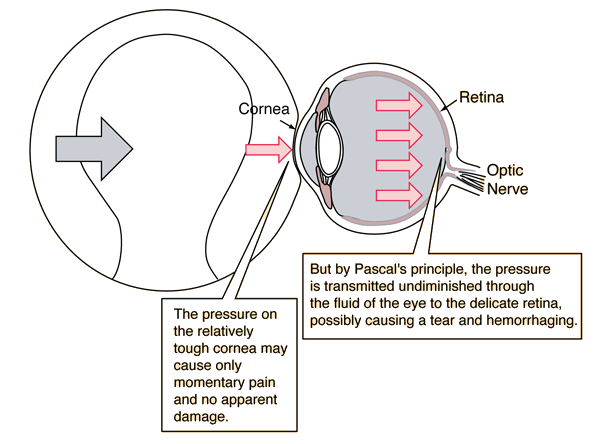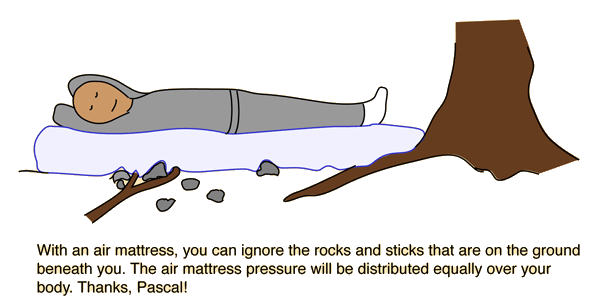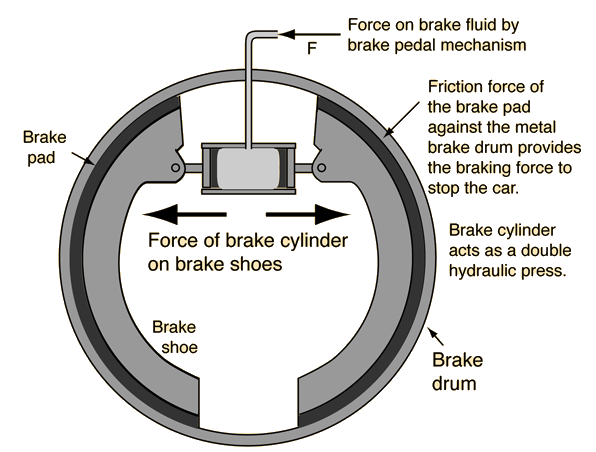Tennis Ball Impact on Eye
A blow to the eye by a tennis ball can cause more damage than one might expect because of the transmission of the pressure to the back of the eye.

A doctor I knew used an orange to demonstrate the dangers of a blow to the eye. He would hold the orange in one hand and strike it sharply with the palm of his other hand on one side. The peeling of the orange on the side opposite the blow would split. By Pascal's principle, we know that pressure exerted on one part of an enclosed static fluid will transmit undiminished to all parts of the fluid. The pressure transmitted through the orange to its back side was enough to rupture the peeling, while the side on which the blow occurred suffered no apparent damage. By this example he sought to communicate the danger to the retina from a frontal blow on the cornea of the eye.
Pascal's principle concepts
| HyperPhysics***** Mechanics ***** Fluids | R Nave |

